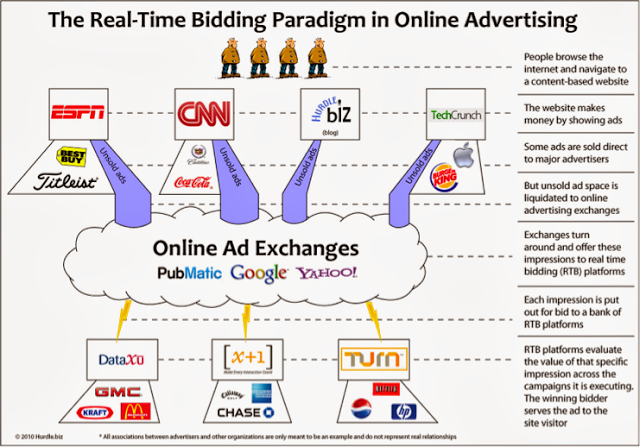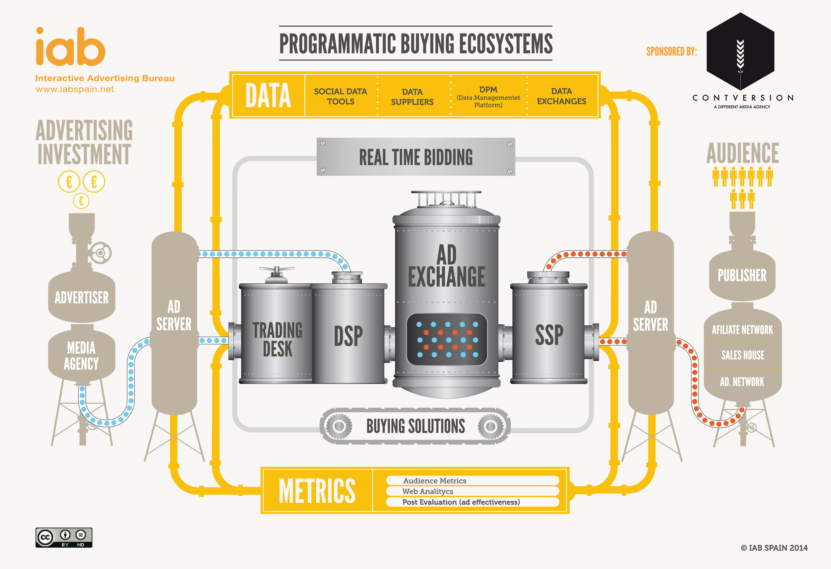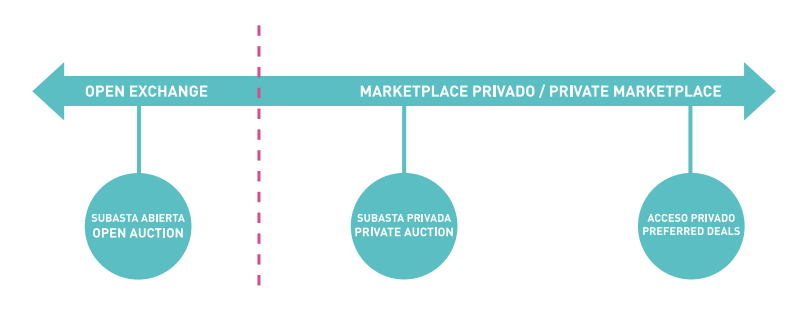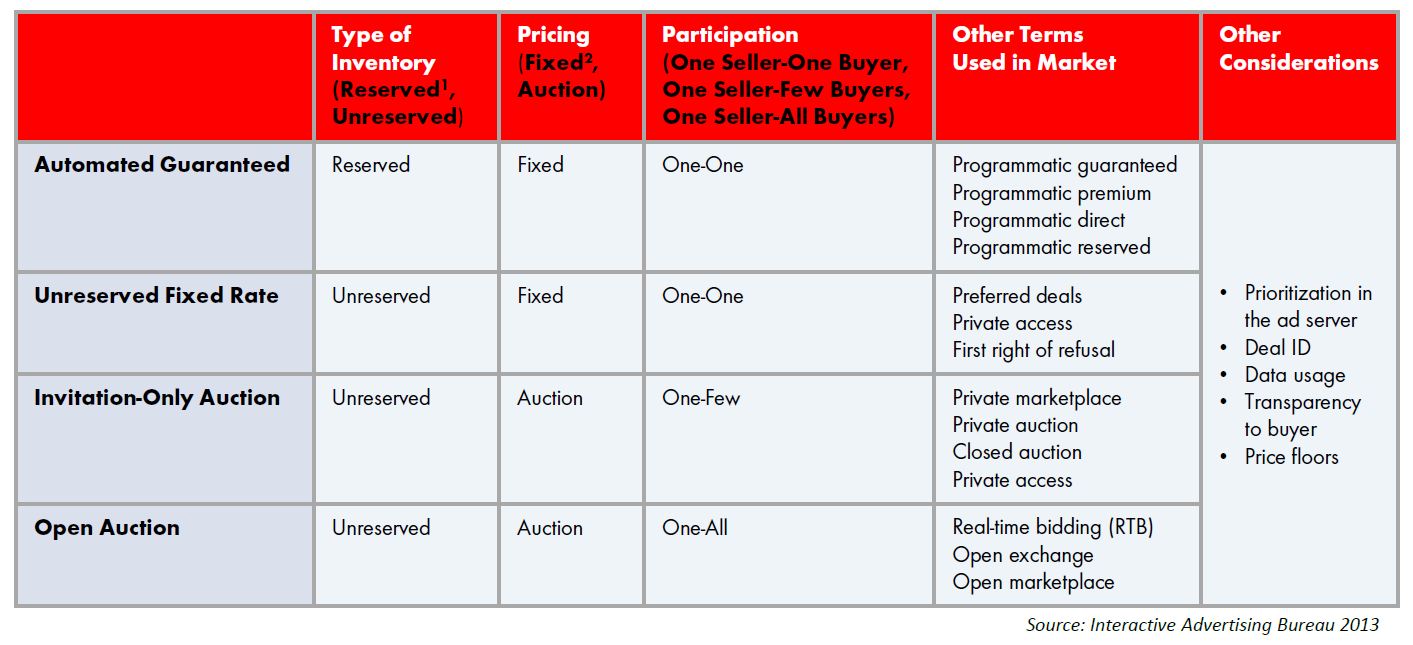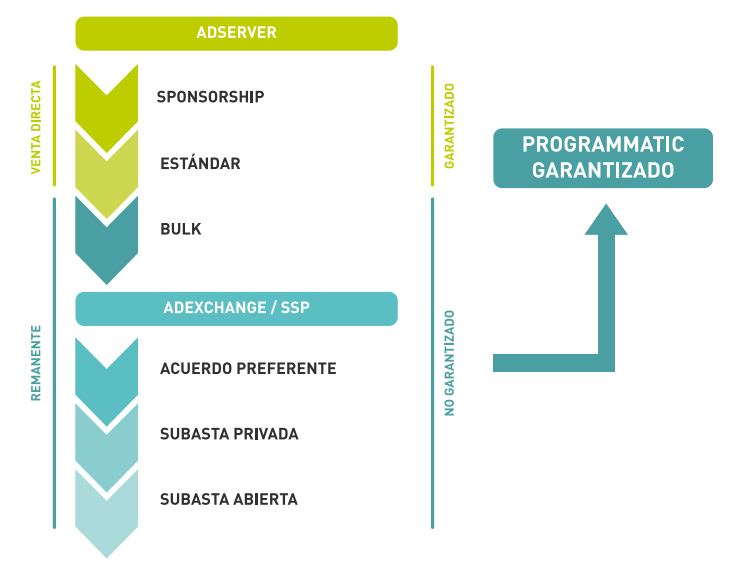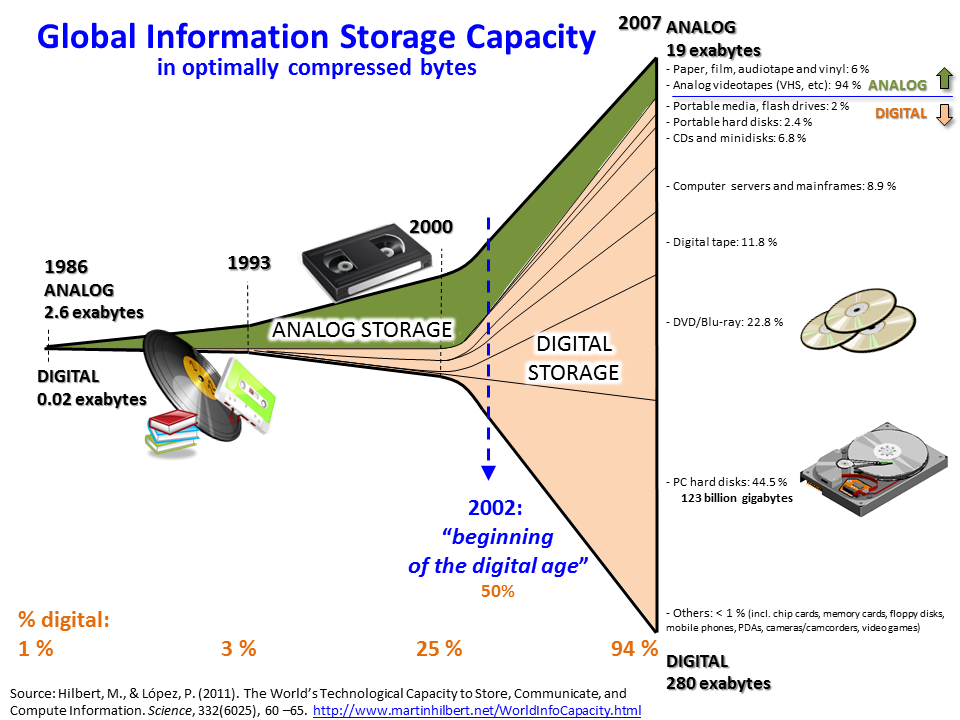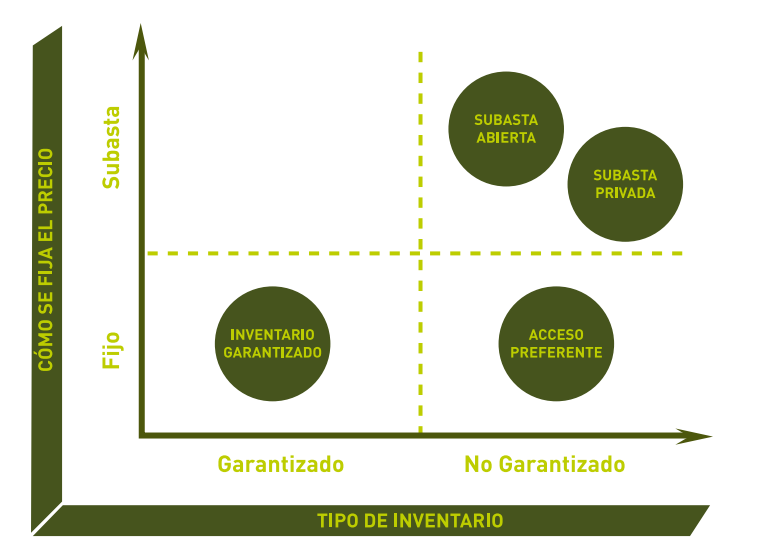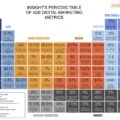The 30 Magic words of Programmatic buying
the 29 of November of 2016
the 29/11/2016
Do you know the essential programmatic buying terms? An innumerable number of concepts exist for defining the various aspects of the digital marketing sector, from something basic like the target of the online marketing campaign to terms like CLV, which are hard to define.
So you could create a dictionary not only of programmatic buying terms but also terms for other areas of digital marketing that, if you can master, will help you increase sales.
Do you need some help? Here’s a little something to help refresh your memory. These are the 30 terms of programmatic buying as used in the Programmatic buying white paper by IAB Spain that will turn you into an expert in this area.
TABLE OF CONTENTS
1.- RTB
Real Time Bidding (RTB) is a system that refers to the practice of bidding on ad inventory in a continuous and instantaneous auction. Advertisers bid on each impression in each available advertising space on a website. The RTB system, which is one of the pillars of the programmatic buying, goes beyond the traditional digital display advertising based on the CPM model.
2.- Banner
A banner is a space on websites or social networks that is set up to show advertising. Banners can be of various sizes and normally incorporate sounds, animations and even video. IAB has introduced a classification system for the different banner formats. By clicking on them, you will usually be taken to the website or landing page of the company being advertised.
3.- CPM
Cost per thousand impressions. It is the advertising pricing model based on the cost per thousand impressions generated by an advertisement.
4.- Bidding
Bidding is a process where multiple advertisers compete for the same Ad slot on a website. The Ad space will be given to the advertiser who generates the most profit for the website.
5.- Ad Exchange
This is one of the most important terms of programmatic buying; it is the place where supply and demand are combined for commercial transactions. Ad exchange is an online platform that connects the advertiser and the publisher. The publishers offer and manage their advertising spaces and the advertisers create and manage their campaigns.
6.- Inventory
Normally, a company´s inventory is made up of its raw materials, products in production, the supplies it uses in its operations and the finished products. However, Advertising inventory as a programmatic buying term is the total number of impressions that a publisher can sell in any section of a website or throughout the whole website.
7.- CPA
CPA stands for Cost per acquisition. It is the purchasing model that goes beyond the click because it requires a certain interaction on the part of the user when they reach the advertiser’s landing page. The kind of action can be summed up as a subscription, a download, or the purchase of a product as well as a number of other possible actions. This way the advertiser only pays when that action has been executed.
8.- Target
This is the target audience. They are very important for a company or a brand because they indicate where and to whom the product or service on offer should be directed. It is the target audience that will be the future consumers of your brand hence the importance of identifying them properly.
9.- Display
The operation of traditional advertising is based on the acquisition of certain spaces in different media outlets for a specific period of time. In the digital environment technology enables this process to be both automatic and measurable.
For this, you have two types of online advertising: Search ads (SEM) and display advertising, a format that is based on displaying adverts, normally banners, in different areas of a webpage. In display advertising the impressions are contracted and the usual measurement system is the CPM, which is another of the important programmatic buying terms that we have already covered in this post.
10.- Open exchange
Is an Ad exchange that allows the advertisers and buyers take part in it without restrictions. The auction is open to anyone who wishes to participate.
11.- 1st Party data
This is data collected directly from the advertiser´s own sources. These include the data collected from channels such as their own website (navigation, viewed pages), their display actions (clicks, impressions..), Social Networks (likes, fans), mobile, emailing or CRM.
12.- 2nd Party data
It is the collection of one company´s 1st Party data by another separate company. This data or second-hand information is usually traded between trusted and relevant partners who are connected. This is used to compliment the company´s existing 1st party data.
13.- 3rd Party data
Unlike 1st party data, advertisers receive this data from external sources. In fact data providers usually provide it. The data can be varied by age, gender, interest, location, etc.
14.- Trading desk
Refers to the existing connection between the agencies and direct advertisers through multiple Ad exchanges. It is the technical team made up of people who optimize the programmatic buying of their different advertisers by connecting with multiple DSPs. They can be part of a media agency or be independent companies.
15.- Private marketplace
These are the Ad exchanges that are restricted or limited to only a few publishers and advertisers. This way they offer stricter control over supply and demand.
16.- Impressions
The number of times or the frequency in which an ad has been shown in a search engine or website. The ads that are based on payment for impressions use the CPM system, cost per thousand impressions.
17.- CPC
Cost per click. The rate that specifies how much is paid for each click on an Ad. It is a technique for buying advertising in which you pay based on the number of clicks an Ad receives. In fact, you don’t count the views or the impressions of the Ad.
18.- DSP Platform
The acronym DSP stands for Demand Side Platform. This bidding technology allows the advertisers and/or media agencies to buy inventory from different Ad exchanges. The bids are made based on audience data, in this case, impression to impression.
19.- CLV – Customer lifetime value
The customer lifetime value or the value of the client´s life is data that allows the company to know what they can spend on marketing to acquire a new client. It is the estimated value that a client can have for a brand based on the entire future relationship with the customer.
20.- CRM
The acronym stands for Customer Relationship Management. It is a strategy and software for organizing and synchronizing sales, as well as the marketing processes, customer service and technical support. This way, CRM encompasses customer support, marketing campaign management and also sales team management.
21.- Ad Server
Within the essential terms for programmatic buying you will find the Ad server or Advertising server. The objective of this platform is to send the ads to thousands of advertising spaces.
22. SSP Platform
The acronym stands for Supply Side Platform. It is a technological platform that allows media and advertising networks to optimize the performance of their inventory automatically, helping them to access multiple sources or aggregators of demand that exist, Ad exchanges, DSPs, Agency trading desks, in an automated way.
23.- DMP Platform
Also known as Data Management Platform. These platforms collect, integrate and manage large quantities of both structured and unstructured data. In fact, they are able to collect audience data from any source.
24.- Big Data
Among the terms of programmatic buying, Big Data is one that defines the enormous and growing amount of data that the digital world creates and the way it is turned into knowledge. Thanks to this data many brands extract analytics to help them make decisions in real time.
25.- Digital Support
Digital Support is an online communication channel. The Digital Ecosystem has given rise to numerous channels and websites where to run campaigns. They can be, email marketing, Landing pages, SMS marketing, Retargeting, Social Networks or Blogs to name a few.
In regards to the Programmatic buying these are the different web pages where ads can be placed.
26.- Retargeting
Retargeting is an online advertising model that targets people who have showed an interest in a particular ecommerce, product or service while on the Internet and send them information related to those products while they continue to surf other areas of the web. At a technical level, in order to create a retargeting campaign web pages have to place a code, which allows them to be traced.
27.- Cookies
A cookie is a small text file containing information that is placed in the web browser of the user with the purpose of identifying the user´s behaviour during visits or sessions. It is essential for retargeting campaigns.
28.- CTR
The Click-Through Rate (CTR) or proportion of clicks shows the frequency with which users who see an online marketing action, click on the links that appear. To get the percentage of clicks, divide the number of clicks on a link by the number of impressions of the Ad, banner or email.
29. Preferential Access
It resembles private bidding because it takes place in the ad exchange environment but with the exception that there is no bidding and only a relationship is established between the publisher and the buyer.
This way, a price is pre negotiated and everything happens in a clear and transparent way. You could say that the practise is very similar to direct sales but without booking inventory which takes place in the ad exchange environment
The buyer can decide whether to buy the inventory that the publisher makes available or not.
30. Data providers
They are collectors, aggregators, and data processors with the capacity to direct the information to the brands so that they can carry out their media actions in both branding and performance.
Knowing and understanding these 30 terms of programmatic buying will give you the opportunity to improve your own programmatic campaigns, however, it is equally important to also put them into practice. The “self-service” tool available in MDirector allows you to integrate your e-mail marketing campaigns, real time bidding on display and sms.
With CRM Retargeting you can add a cookie to every user in your database in order to communicate with them while they surf the different areas of the web. Do you want to know how CRM Display Retargeting works?

